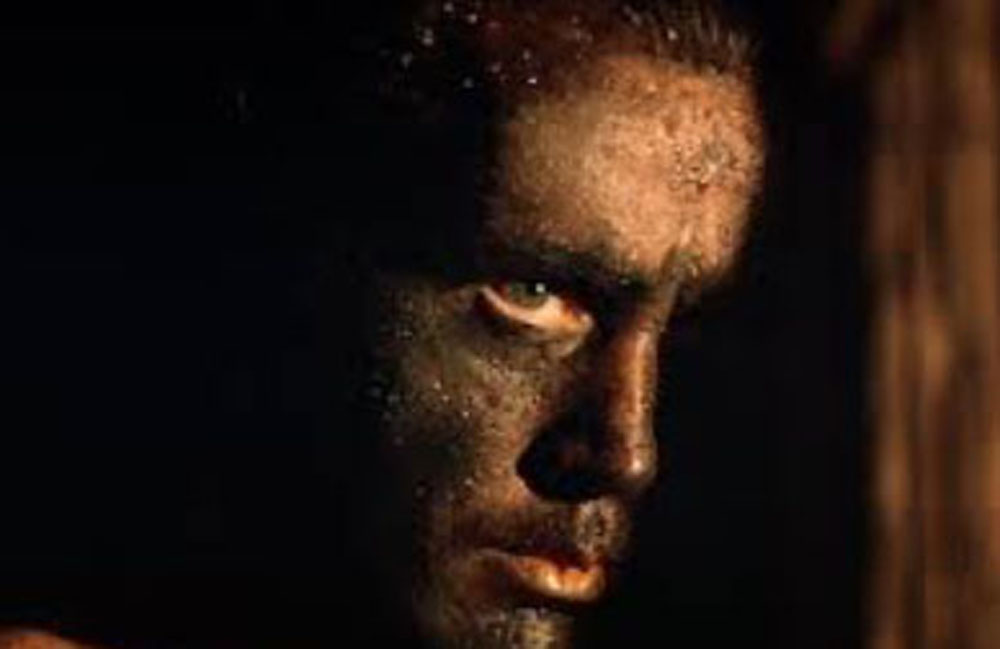 Download PDF of this full issue: v52n2.pdf (36.5 MB)
Download PDF of this full issue: v52n2.pdf (36.5 MB)From Vietnam Veterans Against the War, http://www.vvaw.org/veteran/article/?id=4133
 Download PDF of this full issue: v52n2.pdf (36.5 MB) Download PDF of this full issue: v52n2.pdf (36.5 MB) |
All of these years later and I wake from a Covid dream late in May. I've just wandered through Martin Sheen's cluttered apartment. The floor, the cabinets, walls, and ceiling are all purple haze. I need a shower and the bath is overgrown with blue elephant grass. Stinking, I go into the field instead and pointman Scheppers is blasting a sawed-off shotgun. I grab and aim but never fire. In '81, at his 300-square-foot mansion on Yosemite Drive, he and I argued about the merits of The Deer Hunter and Apocalypse Now. A decade had already elapsed since we'd been reassigned from Nam to Fort Hood. He was down on both films due to his wont of verisimilitude. I tried to point up the expressive wonders of the latter but to no avail. His Air Cav bud nicknamed Gridsquare once said of him that he'd ate too much raw sauerkraut and no amount of Budweiser would ever make up for it. His parents experienced World War II in situ in Germany. We only knew of that time through the word of elders, by the printed word, and in images. As Rachel Kushner has said, only movies have uncannily preserved, like time travel, the sedimented layers of particular faces, scenes, and crucial events. The sight of Captain Willard's face rising from the waters of the Nung River is equally iconic to that of a flock of slicks blasting Wagner and rockets towards the coastal shoreline. How does that compare with Walken shooting himself or De Niro running bare-assed after that big white Cadillac?
There is that unforgettable sort-of response at Do Lung Bridge way upriver in Apocalypse—Roach's heavy-lidded reply to "Do you know who's in command here?" "Yeah"…. In the resulting silence, one wanted to smirk while the pull of gravity seemed to double. Published in 1979, Michael Herr's Dispatches informs us that such an incident actually did happen, that that was the response that he was given to receive at one remote outpost. The movie wouldn't be half as good without his voiceover and his book is the finest piece of literature that one has ever encountered. And it is thoroughly impossible to imagine his words spoken by anyone other than Sheen, amidst Hopper's antic channeling of photographer Tim Page, the gonad-fueled brilliance of Duvall, or the severed head of "never get off the boat!" Freddy Forrest. Is there an actor anywhere, more taken for granted than Martin Sheen? His cohorts couldn't bother to nominate him and decade by decade, their lapse appears ever more extreme. Perhaps it is the most overlooked effort by an actor in cinematic history.
Frankly, Kubrick's dystopian Full Metal Jacket seems more pertinent to Putin's present doings in Ukraine than Apocalypse Now's metaphoric journey through hell. In contrast, It is all horror. We get only what we see with colorless humans depicted as neo-cyborgs. The Deer Hunter configured the war as somewhat of a backdrop, a deeper story of individuals living with after effects or consequences of national illusions far more sadly than events revealed in 1946's The Best Years of Our Lives. The latter film's central characters are more than victims. In The Deer Hunter, we see the thousand-yard stare on the face of a Green Beret adjacent to the scene of a reception for newly wedded innocents near Pittsburgh, one which lends a whole new dimension to the beseech-full notion of god bless America. (Perhaps Zeus damned America and Lyndon's charlatans took off for Zurich with the goods).
Lunch with the general in Apocalypse: just as like the nation at large, Kurtz's methods and ideas became "unsound." Coppola's craft: was it art in the service of barbarism or vice versa—either one or both for the sake of art in a sensational career? Deadpan, Marty stares straight into our camera—having been given cross-border instructions. Thereafter I was constantly picking my jaw off of the carpet viewing the compounded series of montage upon montage, an evanescent propagation of imagery in extreme amplitude—absurd, macabre, and hellish with all colors of the rainbow. A slick lifting a sheep as backdrop to a priest in service to a Christian god while mortars explode inspires comparison to ideas painted by Hieronymous Bosch. One sat in the dark in the Cinerama Dome and his world blew sideways. The only sanity was the trooper getting back into the slick screaming "I'm not going! I'm not going!"
But to stand and leave was not a problem. With the finale of The Deer Hunter, you felt as though you'd just found out your best friend had died. Getting up from that seat near the front row in Westwood's Village Theater was not an easy task—as was each step along a precipice leading back to where one can never forget where they had been situated in life's parking lot.
John Crandell served in II Corps with the 4th Infantry in 1969. Camp Enari, then the division's base of operations, is now solidly covered with uniform rows of tea plants. Only the faint trace of the base perimeter remains.

|